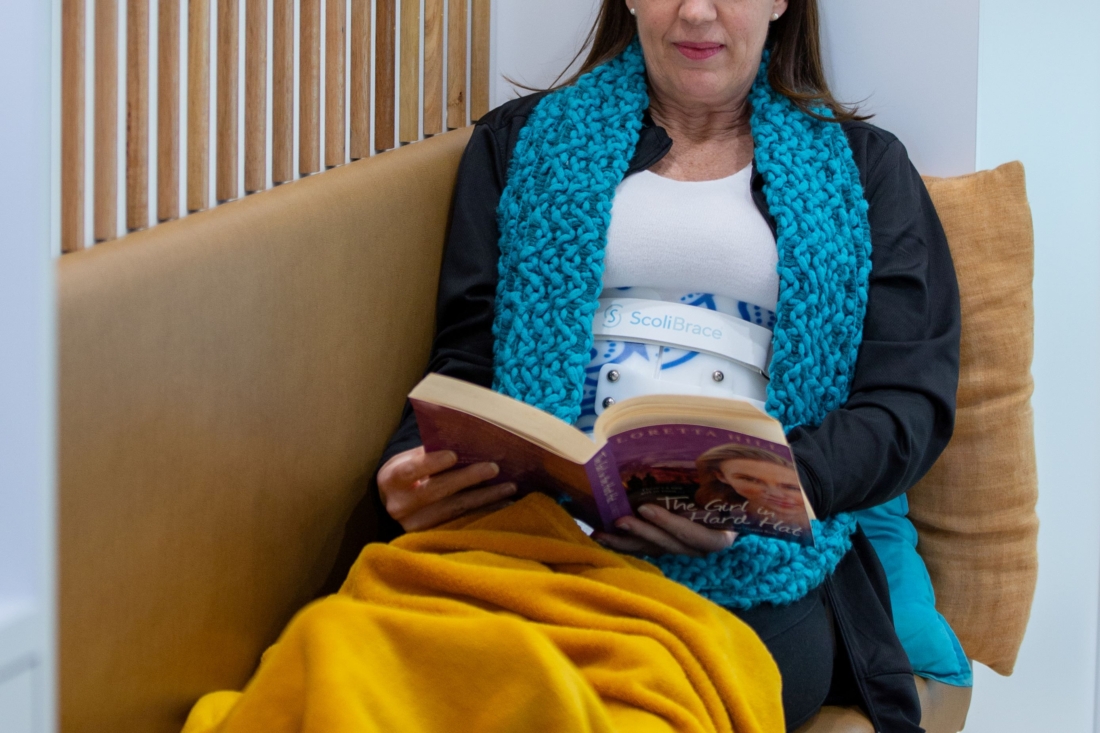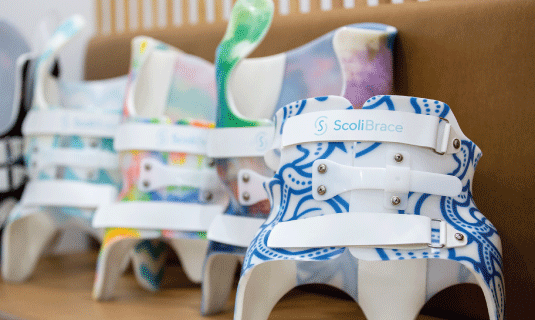Scoliosis can affect individuals of all ages, including older adults. While bracing has been a well-known treatment for adolescents with scoliosis (1), its efficacy in adults has been a topic of interest and research.
A retrospective cohort study (2), published in the Archives of Physical Medicine and Rehabilitation in 2017, sought to evaluate the effectiveness of bracing in adult scoliosis, shedding light on this non-surgical treatment option for those affected by the condition.
Let’s explore the key findings and implications of this study aimed at understanding the role of bracing in adult scoliosis.
Understanding the Study
The study, published in a reputable medical journal, aimed to assess the effectiveness of custom-molded lumbar-sacral orthoses (custom rigid braces) in slowing down the progression of adult scoliosis. The researchers conducted a retrospective analysis of medical records from two French tertiary care hospitals. They included 38 adult participants with progressive idiopathic scoliosis from adolescence, and degenerative scoliosis in adulthood who had not undergone surgery. This group was treated with the custom-molded braces.
The patients were followed for a minimum of 10 years before bracing and 5 years after bracing. The primary outcome measure was the rate of progression of the Cobb angle, a measure used to quantify the curvature of the spine on X-ray, before and after bracing.
Promising Findings
The study showed promising findings regarding the effectiveness of bracing in adult scoliosis.
At the time of bracing, the participants’ mean age was 61.3 years, and the mean Cobb angle was 49.6 degrees. The average follow-up period was 22.0 years before bracing and 8.7 years after bracing.
For both types of scoliosis (degenerative and idiopathic), the rate of progression decreased significantly after bracing. Before treatment, the rate of progression was 1.28 degrees per year, which decreased to 0.21 degrees per year after bracing (P<.0001).
For degenerative scoliosis, it dropped from 1.47 degrees per year before to 0.24 degrees per year after bracing (P<.0001), and for idiopathic scoliosis, it reduced from 0.70 degrees per year before to 0.24 degrees per year after bracing (P=0.03).
Implications of the Study
This study marks the first time, to the knowledge of the researchers, the potential effectiveness of an underarm brace in slowing down the progression of adult scoliosis. Bracing with custom-molded lumbar-sacral orthoses represents a potentially effective, non-invasive treatment option for adults with scoliosis, providing a potential alternative to surgery.
Moreover, this finding carries significance as surgery for scoliosis in older adults is associated with a high rate of complications and technical difficulties, primarily due to the compromised bone quality in this group. Therefore, bracing presents a safer and more viable option for patients who either cannot or choose not to undergo surgery.
Conclusion
In conclusion, the retrospective cohort study on the effectiveness of bracing in adult scoliosis offers promising insights into bracing as a non-surgical treatment option for this condition. The use of custom-molded lumbar-sacral orthoses has been found to slow down the progression of adult scoliosis effectively.
Bracing should be considered as a first-line treatment, along with specific exercise rehabilitation (such as ScoliBalance®), providing a feasible alternative to surgery for eligible patients. As research continues to evolve, we can expect greater clarity on the role of bracing in managing adult scoliosis, leading to improved patient outcomes and enhanced quality of life for those affected by this condition.
To read the research visit here
If you have questions about bracing treatment for adults or how the Adult ScoliBrace could potentially help you, get in touch with a ScoliBrace Provider near you.
References:
- Weinstein, S.L., et al., Effects of bracing in adolescents with idiopathic scoliosis. New England Journal of Medicine, 2013. 369(16): p. 1512-1521.
- Palazzo et al (2017). Effects of bracing in adults with scoliosis: A retrospective cohort study. Archives of Physical Medicine and Rehabilitation. 98: 187-190.


